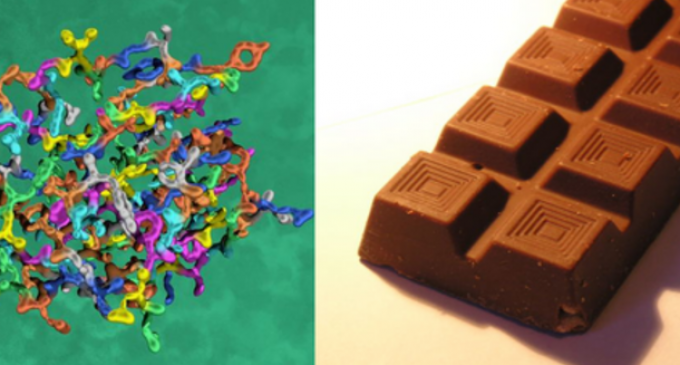Protein chocolate: Sources, market and trends

Private label firms weigh up the benefits of functional weight management chocolate bars using different sources of protein.
ConfectioneryNews spoke to PYC Laboratoire, which manufactures bars with hydrolysed collagen, Pro Dietic, which makes a chocolate toast bar with milk protein and German firm Herza, which prefers whole milk powder and whey protein isolate for its bars.
Collagen: PYC Laboratoire
French company PYC Laboratoire spent six months developing chocolate with hydrolysed collagen, which contains 10 g protein per 35 g bar – equivalent to 30% protein in each.
Aurélie De Schuyteneer, marketing manager for PYC Laboratoire said chocolate bars of the same size contained around 9% protein depending on whether it is dark or milk chocolate. (Milk gives a higher protein content).
She said that hydrolysed collagen was already used in many high protein products and was simply labeled ‘collagen’ on ingredients lists.
“The protein content does not affect the taste. The texture was a little bit changed – it was difficult to keep it smooth – as proteins tend to dry the product.”
Dennis Stoffers, head of product development for Herza, part of the Stern-Wywiol Group, gave his take on collagen as a protein source in chocolate. “If you use collagen you can’t call it “chocolate” in Germany (due to the German ‘chocolate directive’), so this raw material was never an option for us.
“Apart from that there are big differences in texture and taste if you use different kinds of proteins.”

PYC Laboratoire’s protein chocolate bars
PYC Laboratoires bars come in three flavors – mocha, praline and classic – and use natural sweetener stevia. The firm was unable to completely remove sugar due to taste issues, so each bar contains between 0.3-0.4 g.
The bars have half the carbohydrates of a normal bar and brand owners can claim “high in protein”, “low in sugar”, “reduced in carbs” and “high in fiber” since each bar contains 7 g of fiber.
Milk protein: Pro Dietic
French firm Pro Dietic manufactures chocolate toast bars that contain its milk protein. 15 g milk chocolate versions contain 3.3 g of protein while there is 3.14 g in its dark chocolate versions – which averages around 35% of protein per bar.
The milk protein is labelled as such on the ingredients list and is incorporated in the toast rather than the chocolate. The toast contains 50% protein, but the firm is working on a new toast with at least 70% protein content.
Aurélie Bagot, R&D manager for Pro Dietic, said: “We use milk protein because it’s important to have a good nutritional profile and we know that milk protein has a lot of interesting amino acids…it’s difficult to extrude milk protein.”
“We know we can make a product with carbohydrates and extrusion, but it’s difficult with protein because we can’t determine the impact of the protein in this process.”
“We know [from studies measuring impact of heat in processing] that the the nutritional profile stays the same before and after extrusion.”
The company chose to sweeten the bars, which are manufactured 40 km north of Paris, with maltitol because it was well-known in the chocolate industry and left taste unaffected.
Whole milk powder and whey protein isolate: Herza
German firm Herza is another private label manufacturer of protein chocolate that uses whole milk powder and whey protein isolate to create bars with 30% protein or 9 g of protein per 30 g bar.
“The whole milk powder is partially replaced with whey protein isolate. By doing this we not only increase the protein content but also create a protein chocolate bar that is sugar reduced,” said Stoffers
The company also makes a bar with crispy nuggets that are made with either whey protein isolate, soy protein isolate, soy protein concentrate or a mix.
Market for protein chocolate
Protein chocolate is generally sold in speciality health stores. Asked if it could go more mainstream, Pro Dietic’s Aurélie Bagot said: “It’s a niche…for the internet or a special way of sale.”
But Stoffers of Herza argued: “Why should it be a niche product? It is tastes like regular chocolate but is healthier due to the higher protein and reduced sugar content.”
De Schuyteneer of PYC Laboratoire took a more pensive view. “I would like it to move into mainstream markets, but like all the protein products it’s better to use them with doctors and advice so in specialized stores – this is what I recommend”.


































